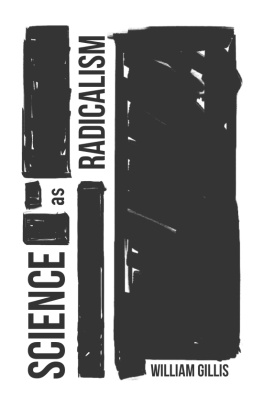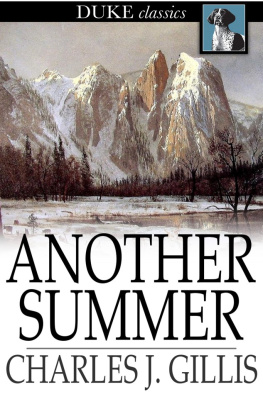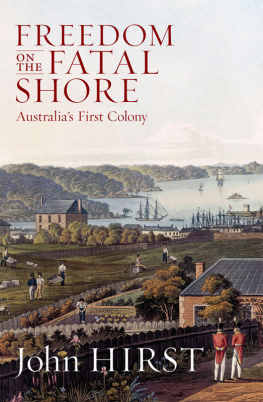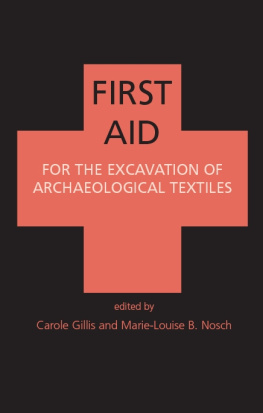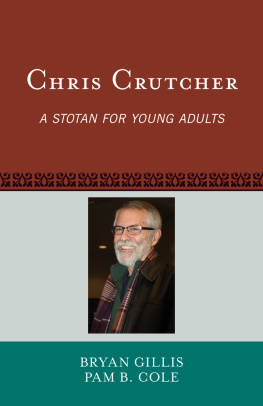JOHN R. GILLIS is the author of Islands of the Mind; A World of Their Own Making: Myth, Ritual, and the Quest for Family Values; and Commemorations. A professor of history emeritus at Rutgers University, he now divides his time between two coasts: Northern California and Maine.
The University of Chicago Press, Chicago 60637
The University of Chicago Press, Ltd., London
2012 by John R. Gillis
All rights reserved. Published 2012.
Printed in the United States of America
21 20 19 18 17 16 15 14 13 12 1 2 3 4 5
ISBN-13:978-0-226-92223-2 (cloth)
ISBN-13:978-0-226-92225-6 (e-book)
ISBN-10:0-226-92223-5 (cloth)
ISBN-10:0-226-92225-1 (e-book)
Library of Congress Cataloging-in-Publication Data
Gillis, John R.
The human shore : seacoasts in history / John R. Gillis.
pages. cm.
Includes bibliographical references and index.
ISBN 978-0-226-92223-2 (cloth : alk. paper)
ISBN 0-226-92223-5 (cloth : alk. paper)
ISBN 978-0-226-92225-6 (e-book)
ISBN 0-226-92225-1 (e-book) 1. Coasts. 2. Seashore. I. Title.
GB451.2.G555 2013
909'.0946dc23
2012023404

This paper meets the requirements of ANSI/NISO Z39.481992 (Permanence of Paper).
INTRODUCTION
Coasts. There are all manner of coasts. Every person born in this world has a coast, an edge, a boundary, a transitional zone between themselves and the world.
JOHN A. MURRAY
Around the world there is an unprecedented surge to the sea. Half of all the globes peoples now live within one hundred miles of an ocean. In the United States, coastal populations have increased about 30 percent in thirty years. Today, what has been termed the coastal zone, constituting only 15 percent of the US land area, is inhabited by 53 percent of the US population. In similar ways, Australia, South America, Asia, and Europe have been turned inside out. Only Africa has not been hollowed out, and even there coastal populations, particularly urban ones, are exploding. We are all now creatures of the edge, mentally as well as physically. Having experienced one of the greatest physical migrations in human history, we are in the midst of a cultural reorientation of vast significance.
In my own lifetime, coasts have changed more than any other feature of the landscape. Not only has the colonization of the coast by interior peoples drastically altered marine environments, but it has utterly transformed the nature of coastal communities. The coasts themselves have taken on an entirely new cultural meaning, not only for those who live there but also for inlanders, who are increasingly oriented toward the sea. Today we are all, in some way or another, coastal. Not only do we live on coasts but we think with them. They are a part of our mythical as well as physical geography.
My own life recapitulates in a small way this epic return to the sea. I was born in New Jersey and taken to its shore as a small child. But most of my childhood and youth was spent in the American interior, and it was not until I was married and the father of two boys that I took up seasonal residence on a small island off the Maine coast. Though I did not realize it at the time, I was participating in what, in retrospect, now appears to have been a historical shift of great significance. Today I am member of that demographic called bicoastals, living in the Bay Area for most of the year and Maine in the summer.
It has taken me a half-century to become fully aware of what this has meant to me and to society more generally. Even now, I am still discovering the different ways it is possible to be coastal. Every summer I am made painfully aware of just how different my relationship to the sea is from that of my Maine neighbors who make their livings from the ocean. I have come to appreciate the difference between living on coasts and living with them, and have learned to make a sharp distinction between people located on coasts and coastal people whose historical relationships with the coastal environment goes beyond mere residence. Mainers like to remind those of us from away just how different we are from those native to their shores. I now accept their judgment.
In Rachel Carsons classic The Sea around Us, the ocean is the beginning of all life. In time some creatures learned to live on land, and a few, like the whale and the seal, found their way back to the sea. Eventually man, too, found his way back to the sea, not to return to it physically but rather to re-enter it mentally and imaginatively. This is precisely what Carson did so brilliantly as a scientist and supremely gifted writer. She brought millions of readers to the edge of the sea, reintroducing them to the precious environment that lies on both sides of the tide line. And this is also what I aspire to do as a historian, except that my task is to cross the time line that separates coastal present from coastal past.
Writing about coasts and coastal people has been a marvelous journey of the mind, full of surprises and discoveries. Many of them have come from our small island within sight of Acadia National Park, where I find it easier to cross the line of tide and time than anywhere else. Its cemetery records two hundred years of island life and death. We occupy a nineteenth-century sea captains house that once belonged to one of Maines best-known writers, Ruth Moore, who knew the lay of both land and sea as well as anyone. Her poems capture the enduring features of the coast but also the massive changes that have come to it over the centuries.
The first summer people were Indians.
For some five thousand years
They built up shore-line shell heaps before
They lost to the pioneers.
Theirs was a time of history
And written records show
That their hold on the offshore islands began
Less than four hundred years ago.
Now comes the era of real estate,
Of the hundred thousand dollar lots,
Of the condominiums, side by side,
Along the shoreline [sic] choicest spots.
What follows the time of developers
No human voice can tell
But the silent offshore islands know,
And they handle their mysteries well.
On Moores coast, the past is ever present. Native Americans have never really gone away. Descendants of those who left shell heaps dating from the time of Christ return annually to clam and shoot deer. They are joined by the heirs of the first European settlers, who still fish and build boats in ways that would be familiar to any ancient mariner. On this coast, even summer people from the suburbs know how to hunt, gather, and garden in ways not much different from those of Stone Age peoples.
Evidence of such continuities is everywhere on Maines shores, but the connective tissue is largely invisible. I had been living there for almost a half-century before realizing how little I knew about their natural and human history. In part it was my own training as a historian that had blinkered me, for we have been taught to treat coasts as places where history begins and ends, of interest only as thresholds. Historians learn to privilege land over water, interior over coastal peoples. And we are not alone in our limitations. Despite Carsons pioneering exploration of the edges of the sea, environmentalists have been slow to take up her challenge to occupy it mentally and imaginatively, to incorporate coasts into their historical perspective. They show deep concern for the fate of coastal flora and fauna but seem indifferent to the human element of coastal ecology, namely

 This paper meets the requirements of ANSI/NISO Z39.481992 (Permanence of Paper).
This paper meets the requirements of ANSI/NISO Z39.481992 (Permanence of Paper).

